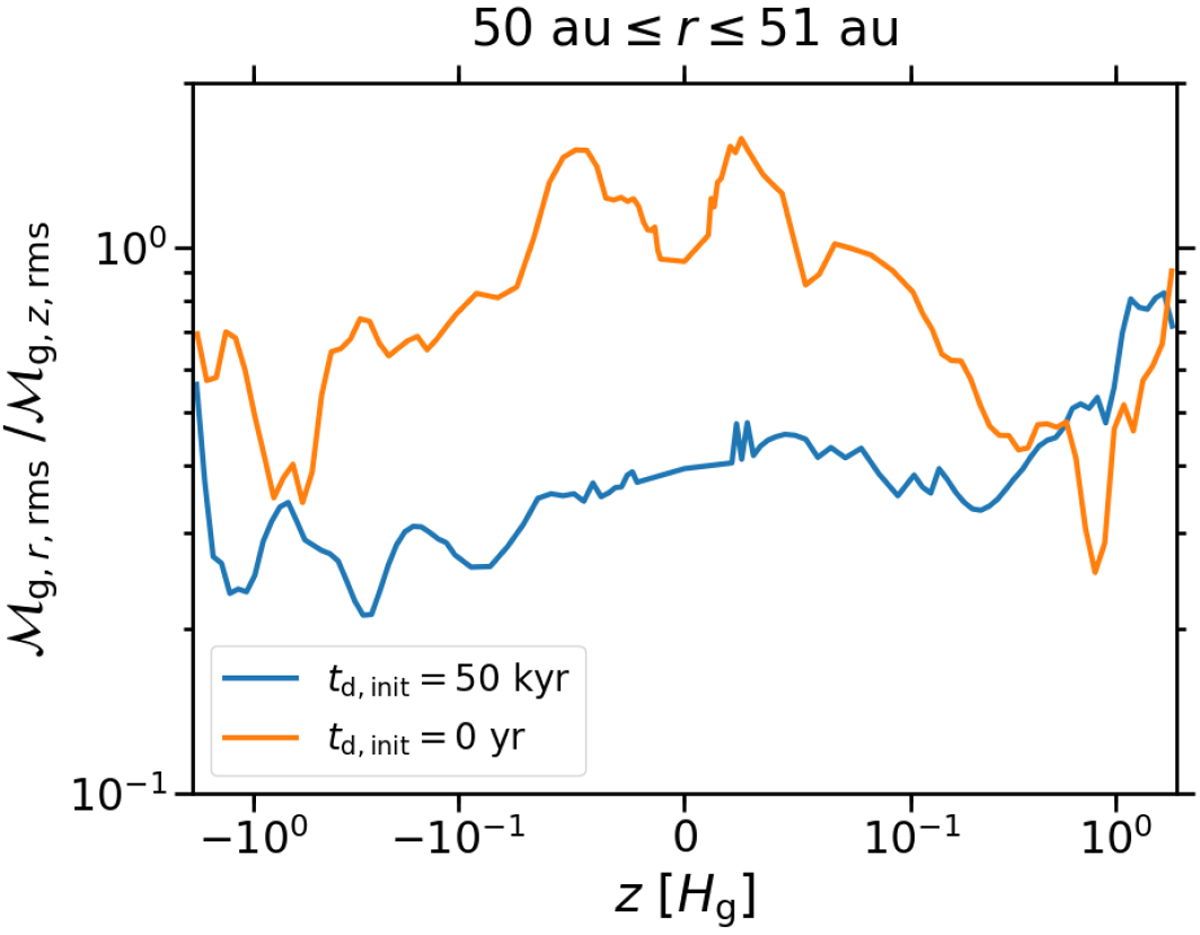Fig. 5

Ratio of the root mean square Mach number of the radial gas velocity ![]() to the root mean square of
to the root mean square of ![]() as a functionof z in units of gas scale heights. The abscissa is scaled linearly between − 0.1 and 0.1 gas scale heights and logarithmically otherwise. To compute the root mean square, we take the mass-weighted average over r = 50 to 51 au and the average over 1 kyr through t = 55 kyr in thecase of the simulation iso_Z=0.02_Lr=90au_Lz=4Hg_tdinit=50kyr (blue line) and through t = 10 kyr in thecase of the simulation iso_Z=0.02_Lr=90au_Lz=4Hg (orange line). Away from the mid-plane, the radial-to-vertical Mach number ratio is less than unity in both simulations. While this anisotropy extends over all heights if the dust is introduced after 50 kyr, the Mach number ratio is close to one in the midplane if the dust is initialized at the start. This is indicative of the vertical shear instability being the primary source of turbulence in the midplane in the former case, but the streaming instability in the latter case.
as a functionof z in units of gas scale heights. The abscissa is scaled linearly between − 0.1 and 0.1 gas scale heights and logarithmically otherwise. To compute the root mean square, we take the mass-weighted average over r = 50 to 51 au and the average over 1 kyr through t = 55 kyr in thecase of the simulation iso_Z=0.02_Lr=90au_Lz=4Hg_tdinit=50kyr (blue line) and through t = 10 kyr in thecase of the simulation iso_Z=0.02_Lr=90au_Lz=4Hg (orange line). Away from the mid-plane, the radial-to-vertical Mach number ratio is less than unity in both simulations. While this anisotropy extends over all heights if the dust is introduced after 50 kyr, the Mach number ratio is close to one in the midplane if the dust is initialized at the start. This is indicative of the vertical shear instability being the primary source of turbulence in the midplane in the former case, but the streaming instability in the latter case.
Current usage metrics show cumulative count of Article Views (full-text article views including HTML views, PDF and ePub downloads, according to the available data) and Abstracts Views on Vision4Press platform.
Data correspond to usage on the plateform after 2015. The current usage metrics is available 48-96 hours after online publication and is updated daily on week days.
Initial download of the metrics may take a while.


